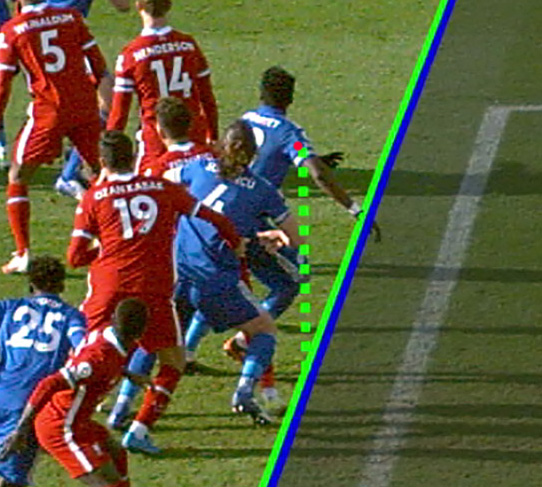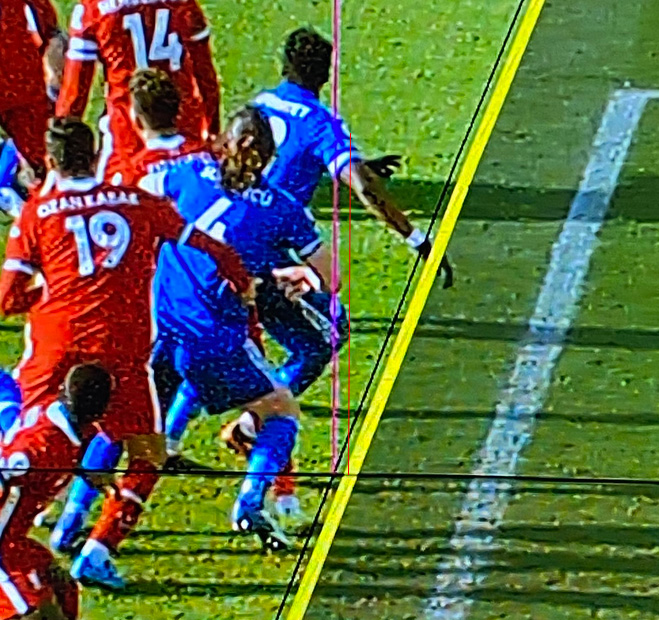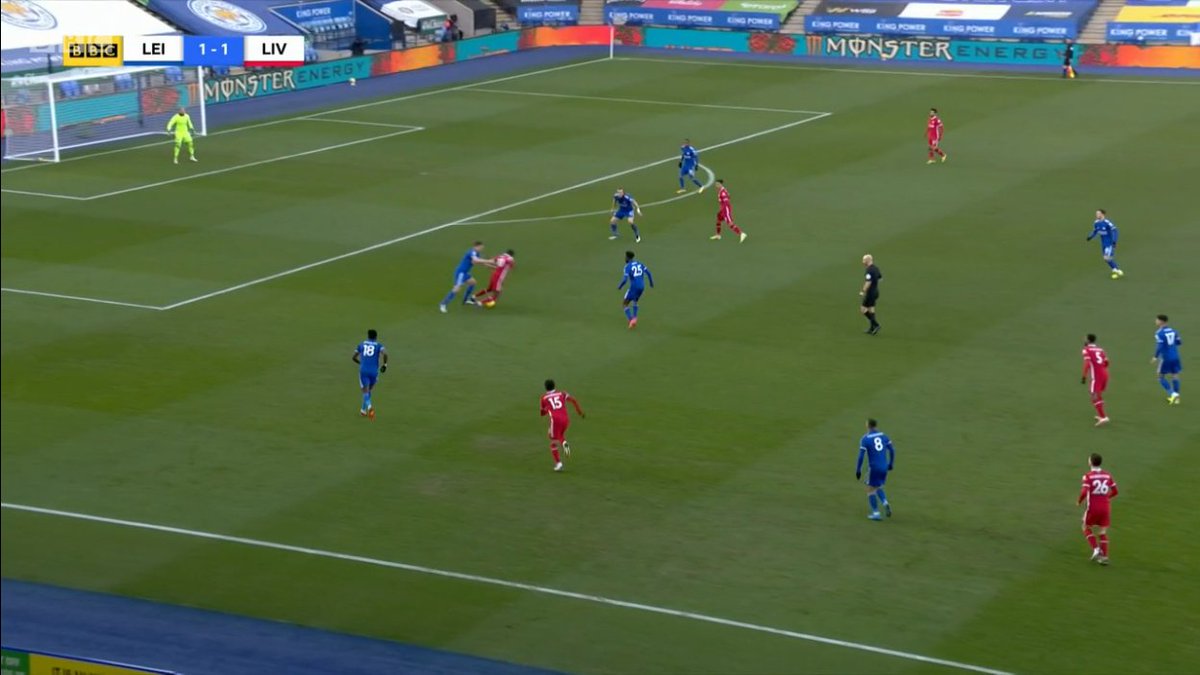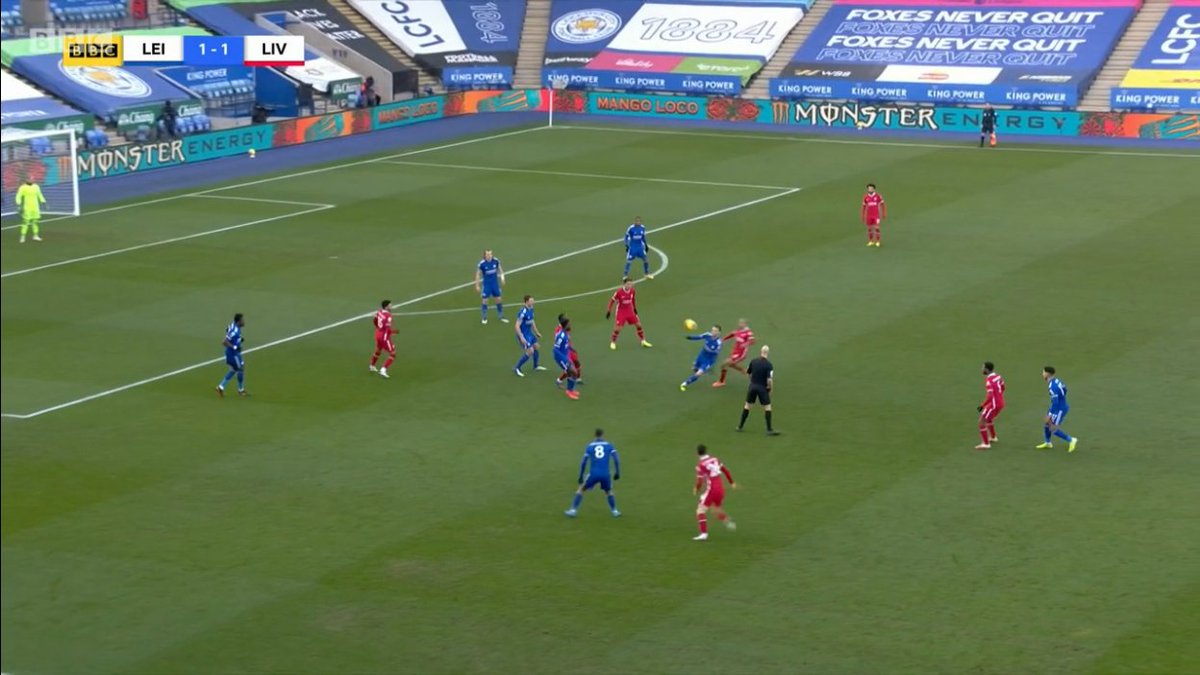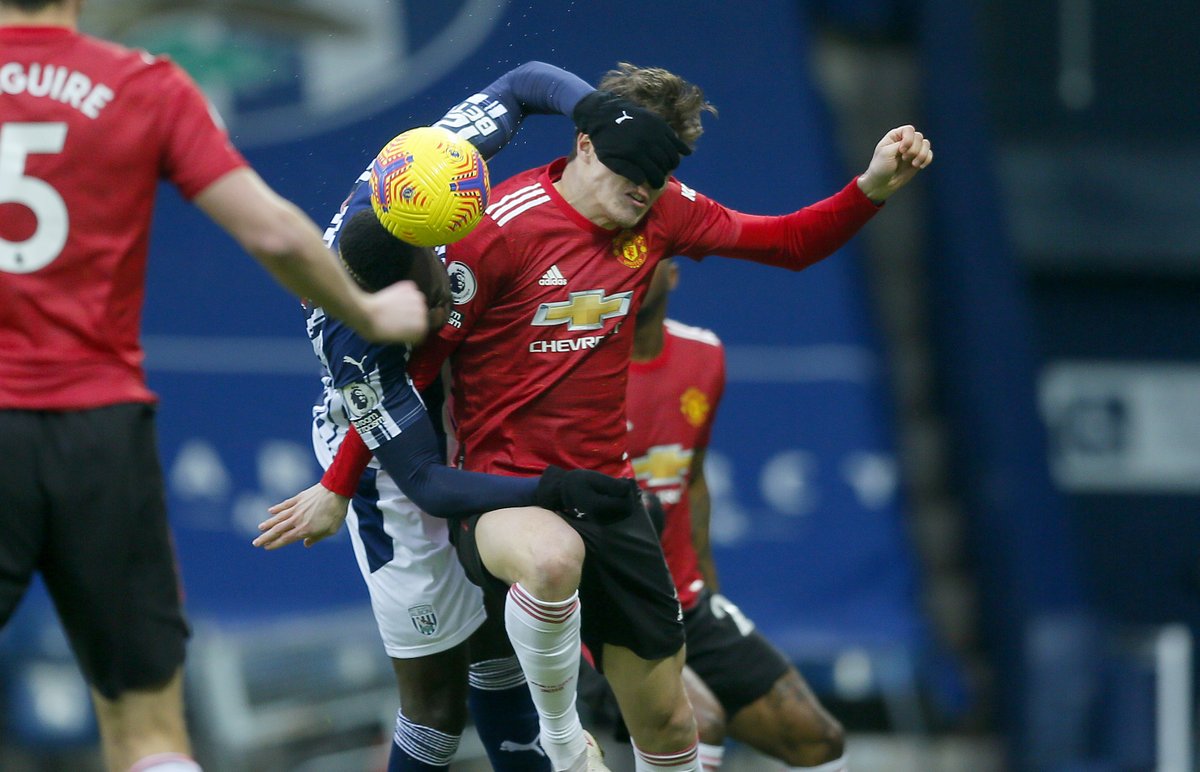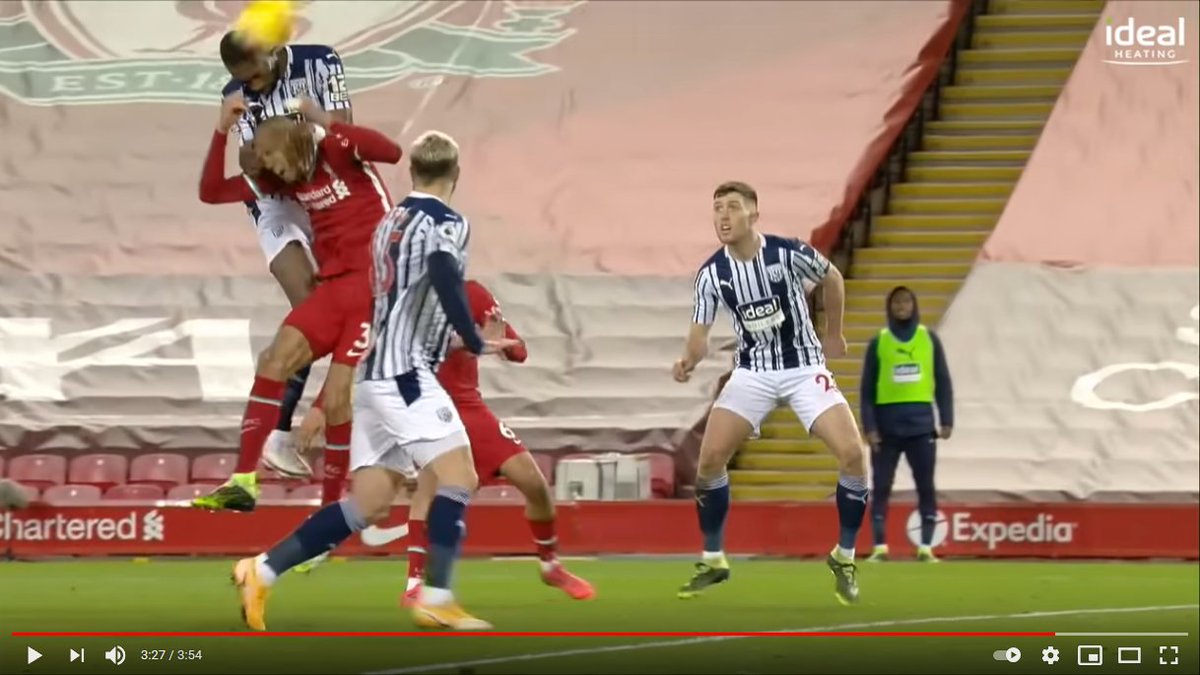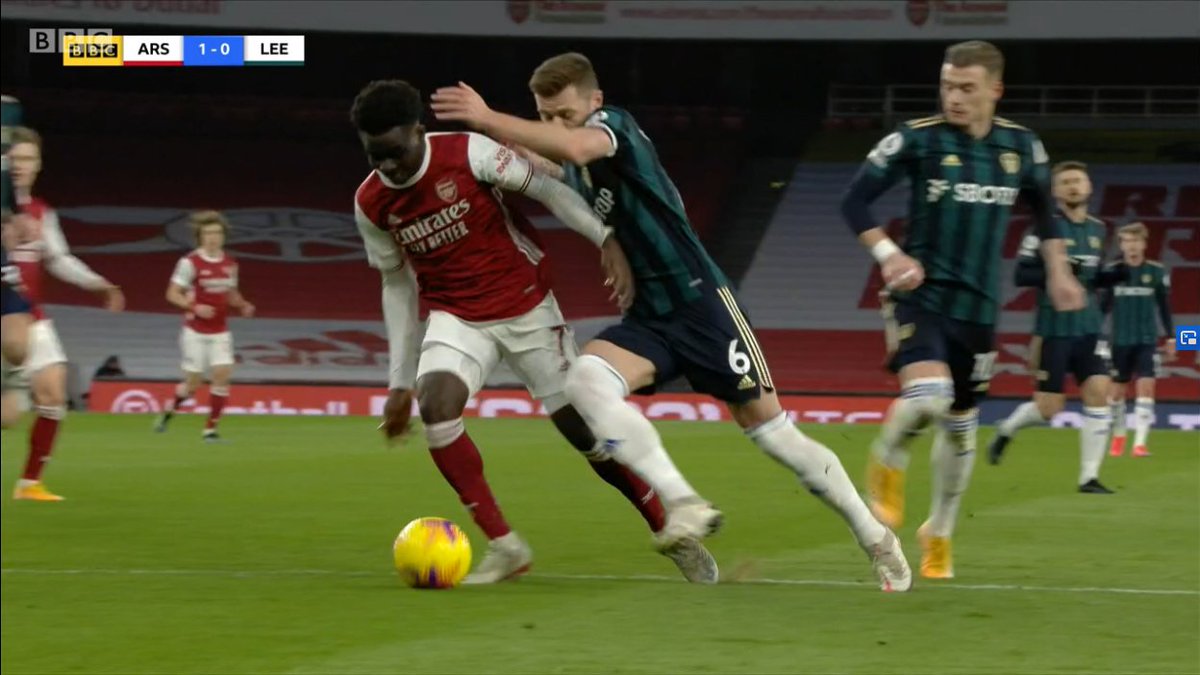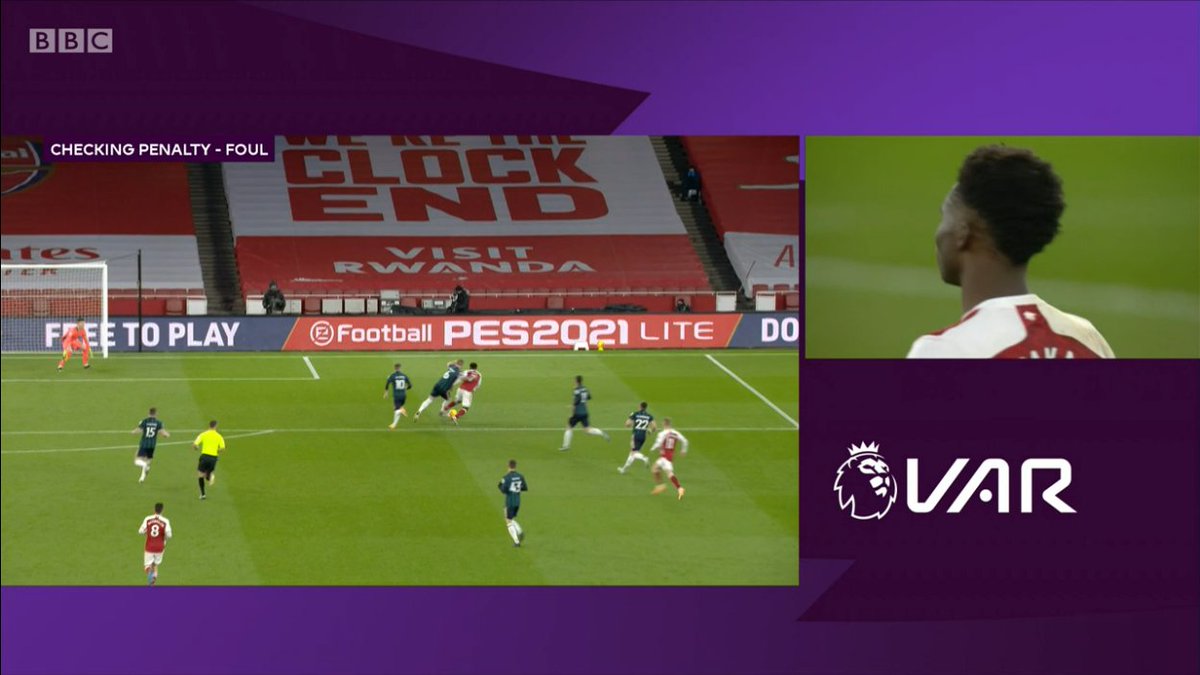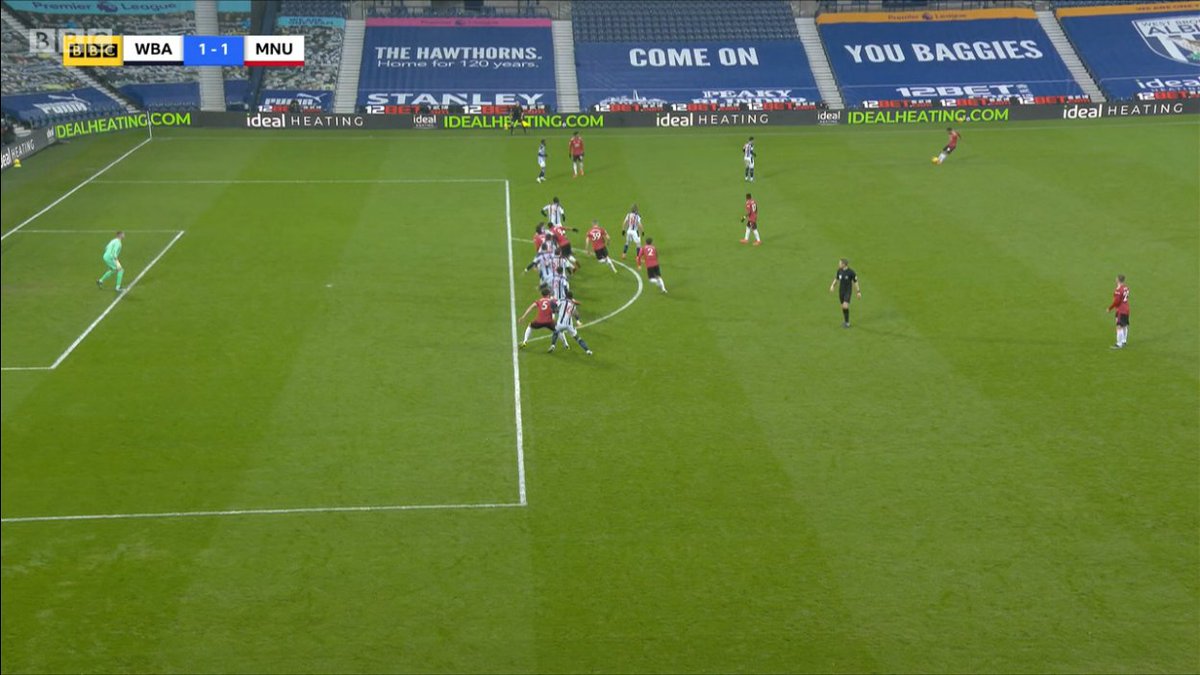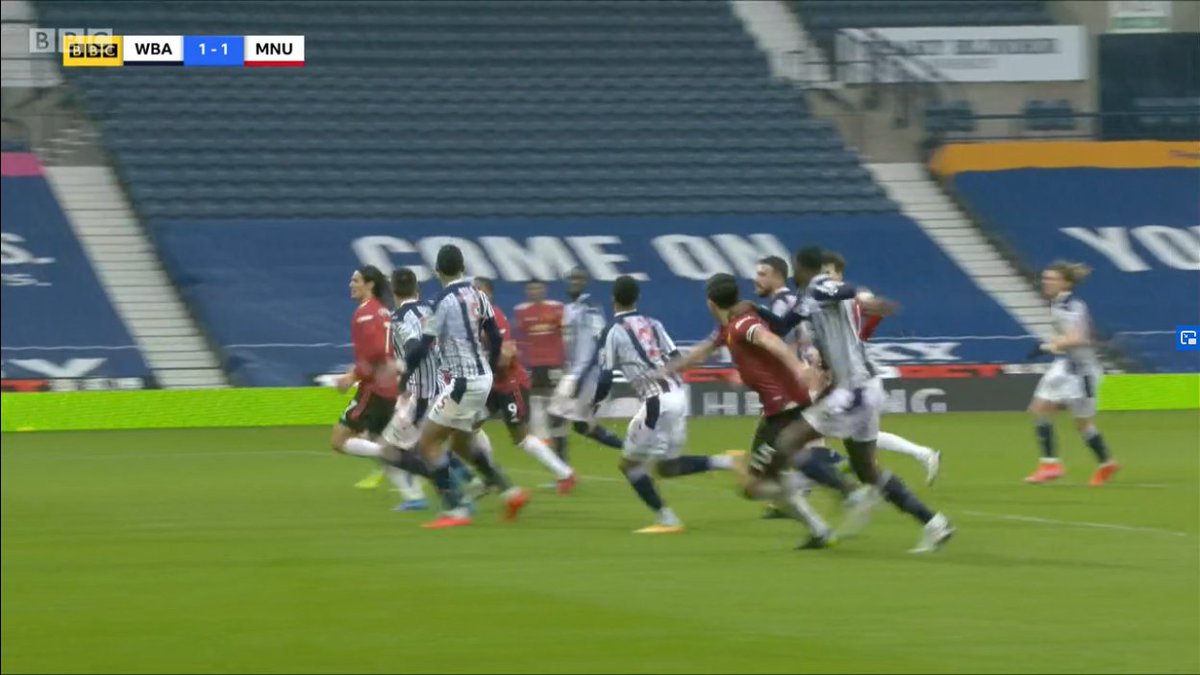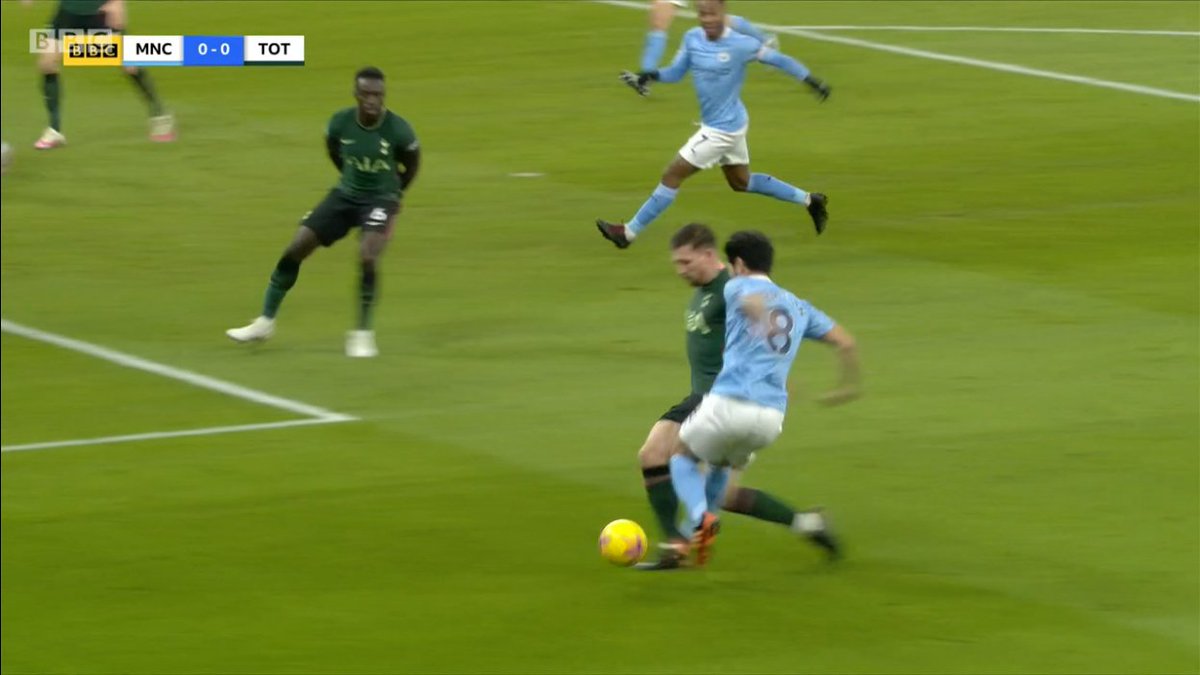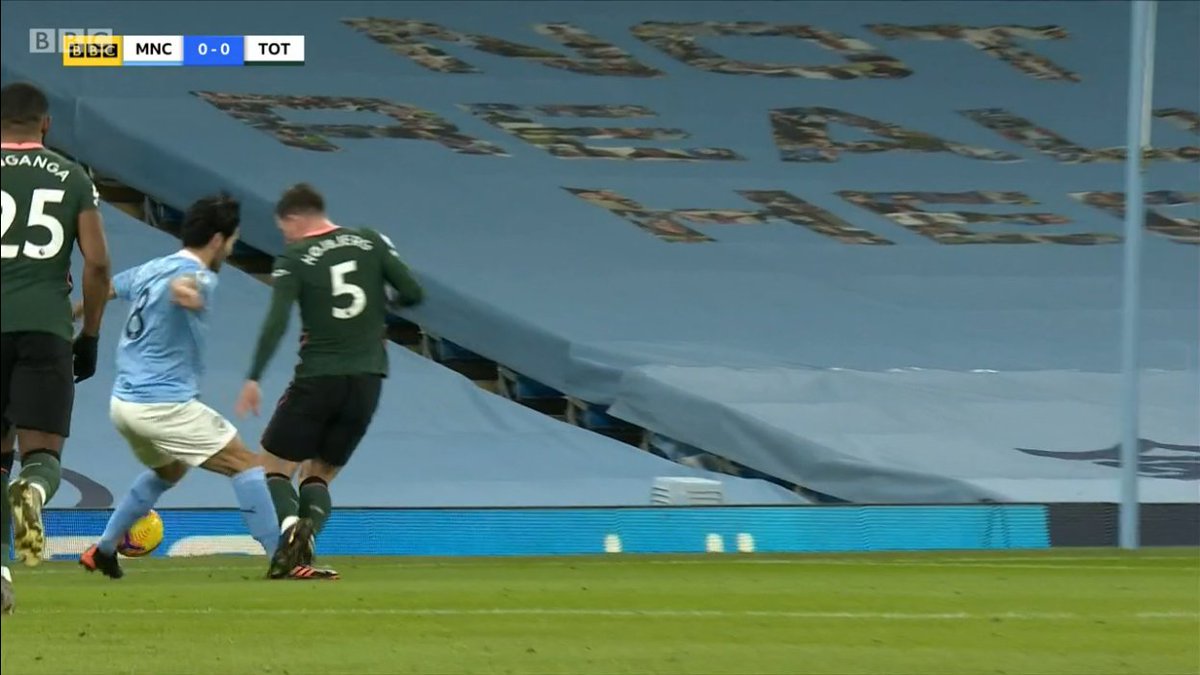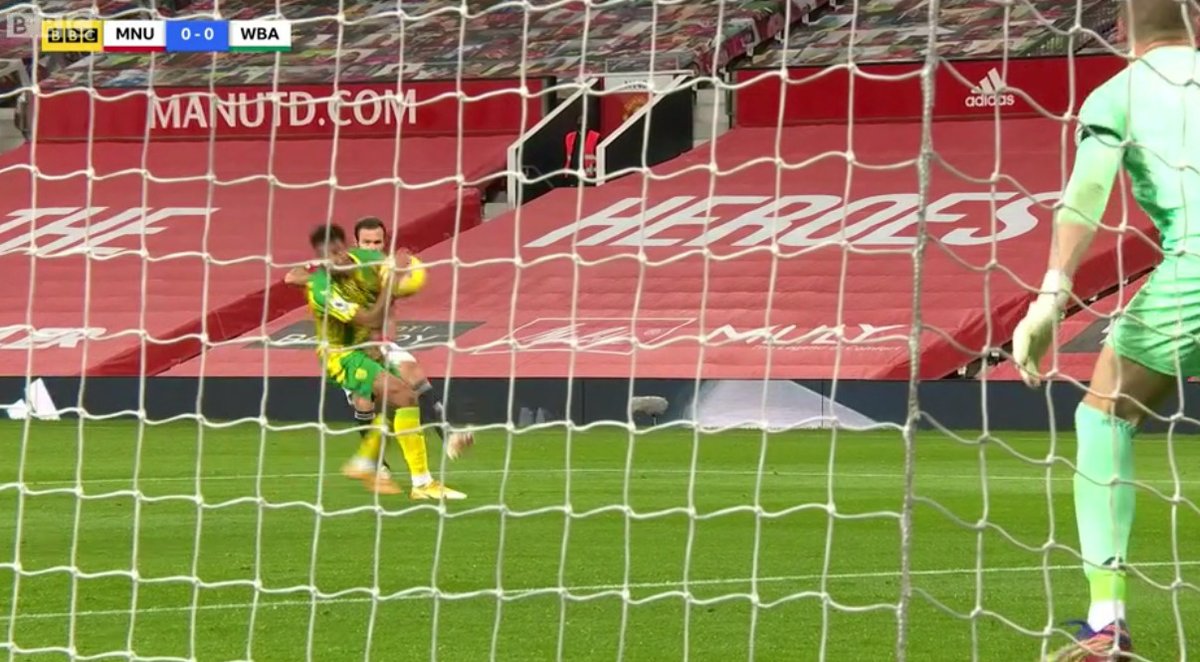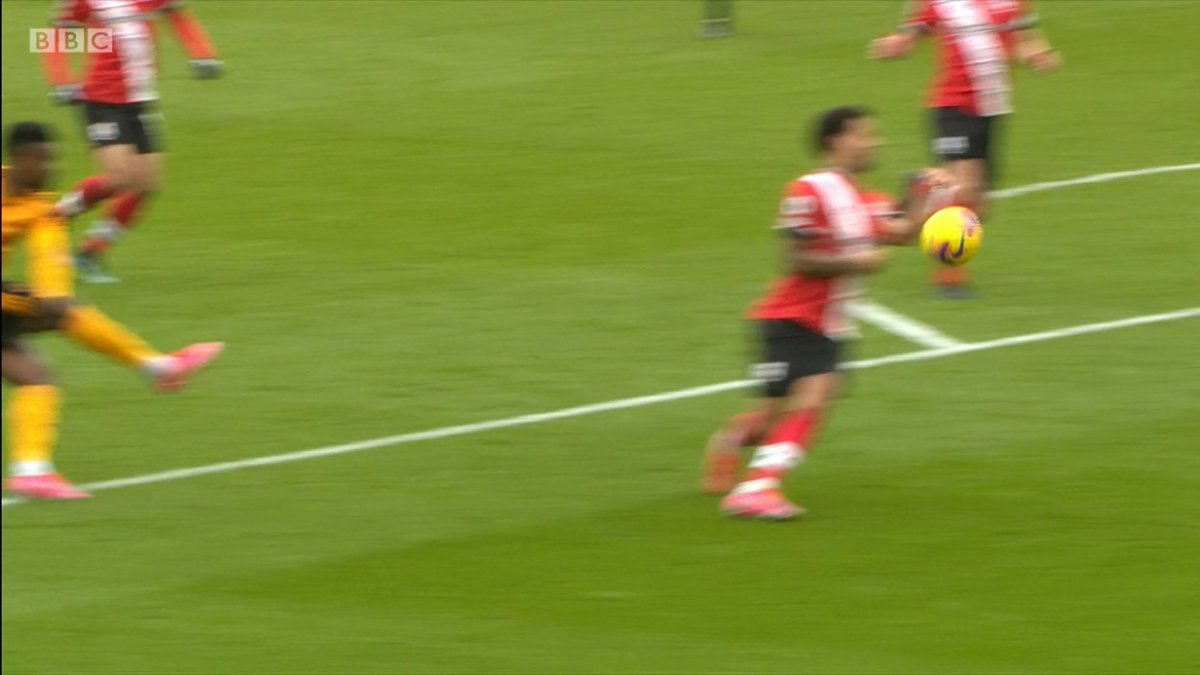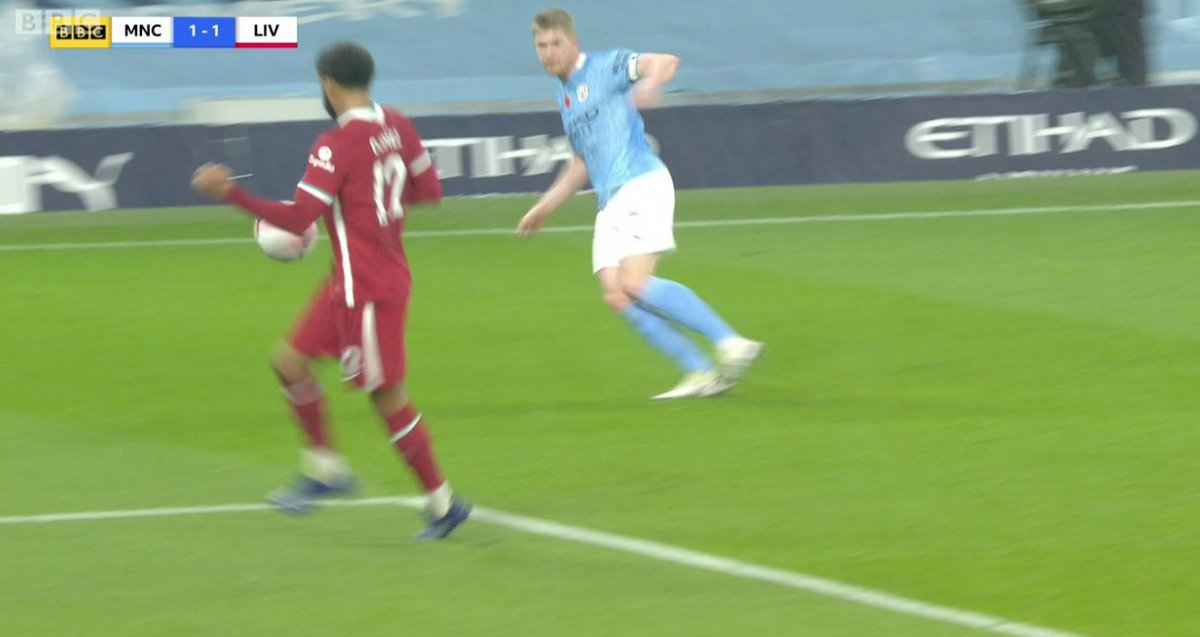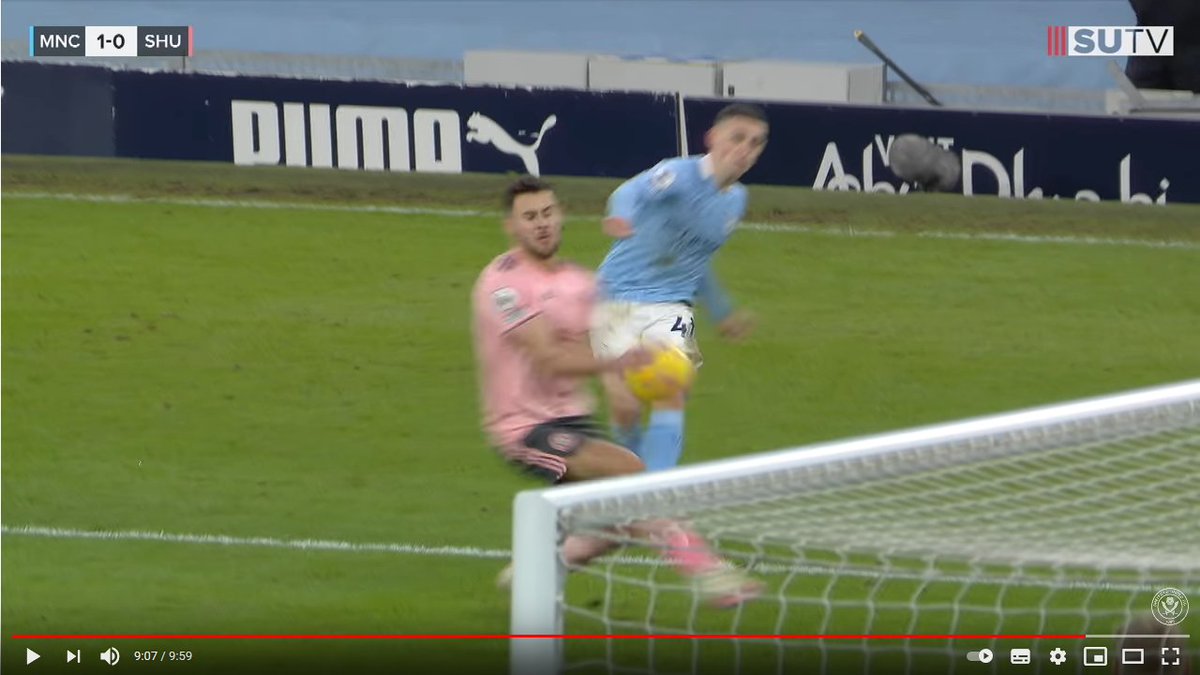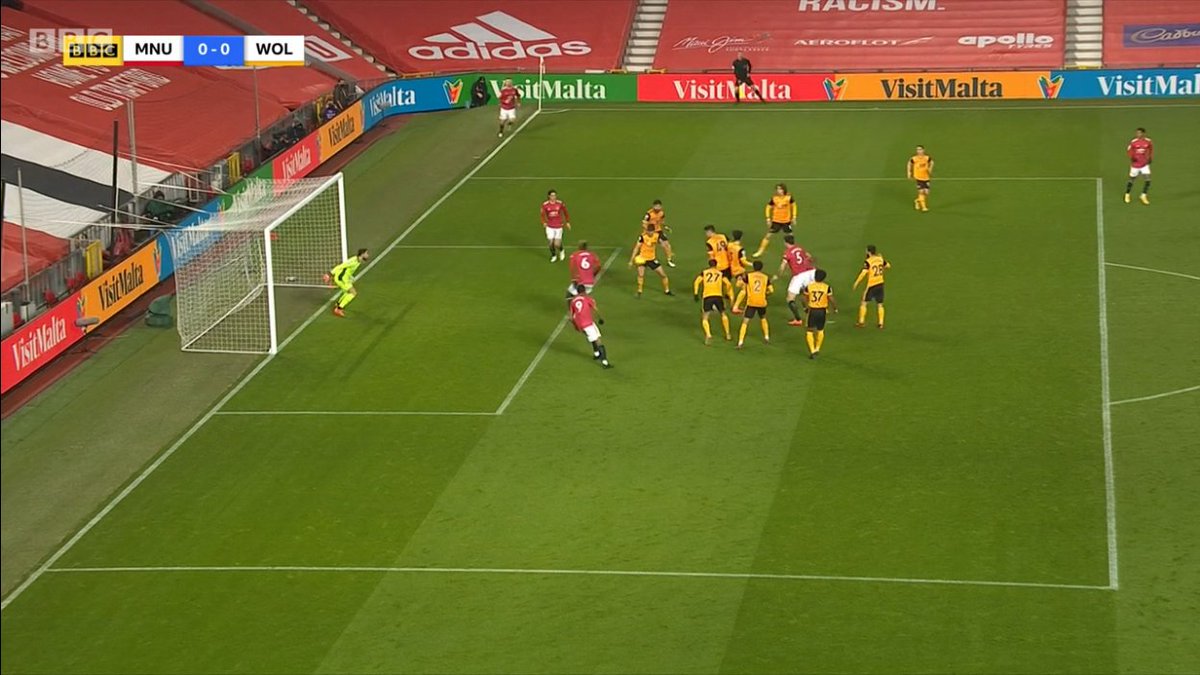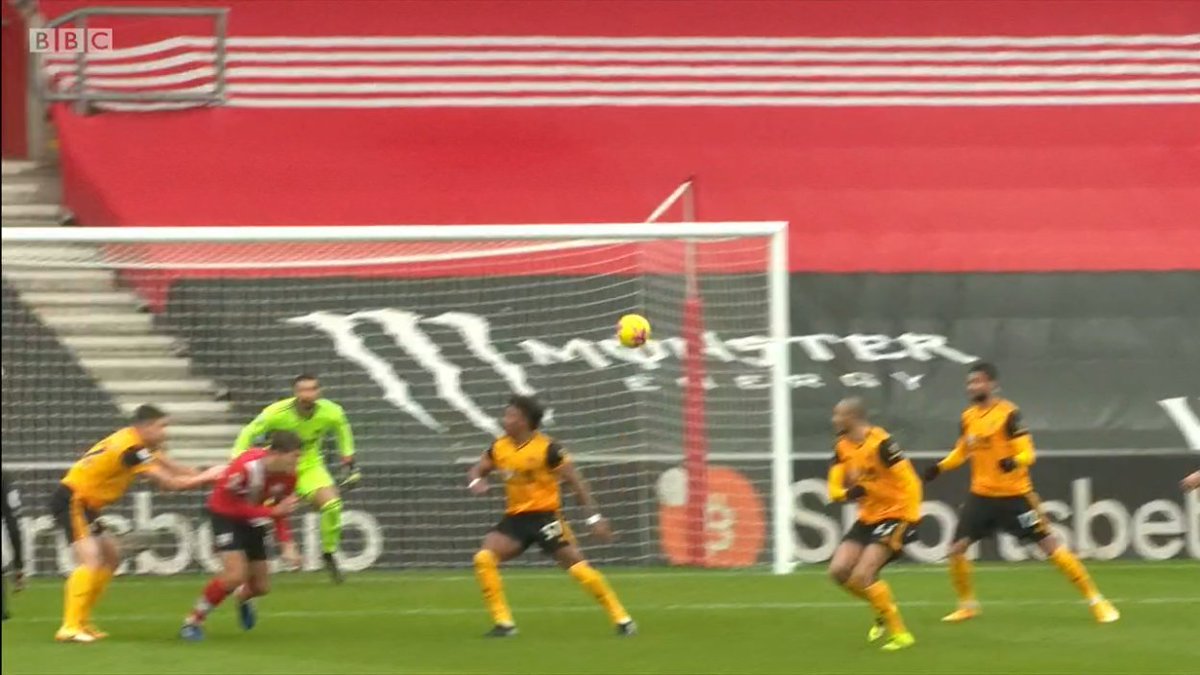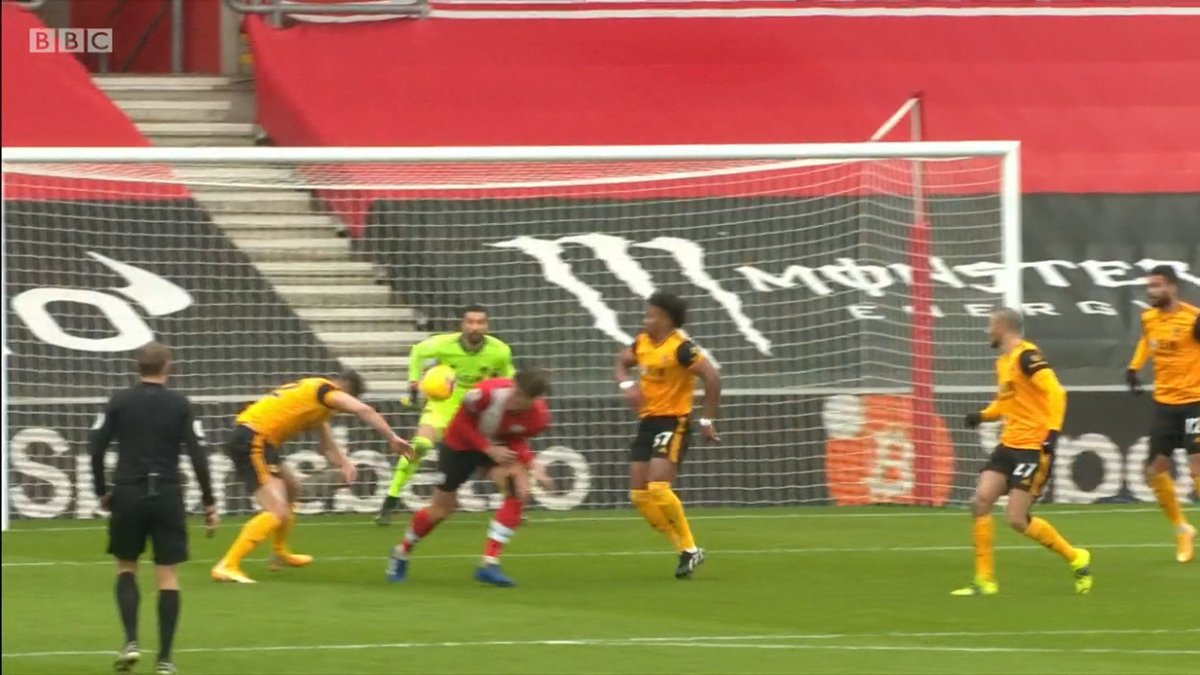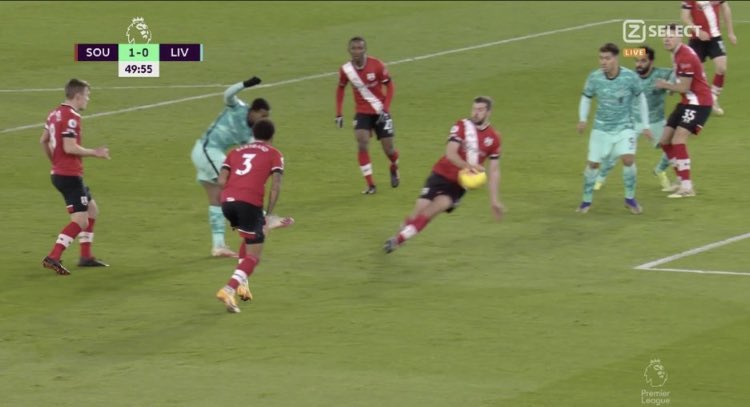The Monday VAR thread, on Tuesday, has landed. Lots to cover this week, you might say too much...
Including:
- Leicester vs. Liverpool
- Rescinded penalties
- What is handball?
As usual, don't shoot the messenger - and there's too much to include everything.
Including:
- Leicester vs. Liverpool
- Rescinded penalties
- What is handball?
As usual, don't shoot the messenger - and there's too much to include everything.
Let's start by remembering that the first VAR decision at Leicester was in Liverpool's favour - and correctly so.
Stuart Attwell correctly decided the contact on Harvey Barnes from Tiago was just outside the area, and cancelled the penalty.
Stuart Attwell correctly decided the contact on Harvey Barnes from Tiago was just outside the area, and cancelled the penalty.
Onto the James Maddison goal, allowed after Daniel Amartey was ruled onside by the VAR, following an offside flag.
Two initial points:
- Frame selection correct
- I've no issue with the defensive line to Firmino's toe. No clear evidence of an issue with a "shadow"
Two initial points:
- Frame selection correct
- I've no issue with the defensive line to Firmino's toe. No clear evidence of an issue with a "shadow"
What isn't clear or convincing is the attacking line to Daniel Amartey.
PGMOL is happy that Stuart Attwell's decision was correct, but it's difficult to get on board with.
I'll run through a few questions that remain over the decision.
PGMOL is happy that Stuart Attwell's decision was correct, but it's difficult to get on board with.
I'll run through a few questions that remain over the decision.
Firstly, to make clear the very edge of the sleeve is NOT, and never has been, the plot point. Any images or graphics on social media that suggest this are incorrect.
The plot point is on the sleeve, level with the armpit. Clearly, this leaves decisions open to inconsistencies.
The plot point is on the sleeve, level with the armpit. Clearly, this leaves decisions open to inconsistencies.
Looking at the red dot here on the onside decision, this represents the plot point.
The explanation given is the angle is deceptive, and it is the furthest forward part of Amartey.
The badge area, usually used, is further back due to the position of the arm and body shape.
The explanation given is the angle is deceptive, and it is the furthest forward part of Amartey.
The badge area, usually used, is further back due to the position of the arm and body shape.
Then there is the question of the knee, as I have never seen the vertical line go through another body part like this.
Again, the answer given was about the perspective of the camera angle. But the offside tech is supposed to remove that.
Again, the answer given was about the perspective of the camera angle. But the offside tech is supposed to remove that.
I've not been able to get information that convinces me this onside decision was correct without any serious doubt.
A line drawn from the badge goes past the edge of the knee and lands inside the yellow defensive line. That suggests that Daniel Amartey was marginally offside.
A line drawn from the badge goes past the edge of the knee and lands inside the yellow defensive line. That suggests that Daniel Amartey was marginally offside.
With other questionable offside decisions, I've had explanations that are either acceptable or fit the use of the technology as we have seen it in the Premier League.
PGMOL are standing by the Amartey decision, but the information provided hasn't been convincing.
PGMOL are standing by the Amartey decision, but the information provided hasn't been convincing.
Just as a side point before we move on. Many asked "how can that be onside when Bamford was offside by his arm"?
Quite simply offside is down to the relative position of TWO players. So a striker pointing for the ball alone doesn't make him either onside or offside in any case.
Quite simply offside is down to the relative position of TWO players. So a striker pointing for the ball alone doesn't make him either onside or offside in any case.
Liverpool fans wanted a foul in the build-up on the second goal, when Jonny Evans appeared to push Sadio Mane to the floor.
The key question for the VAR is the Attacking Phase of Play - namely when Leicester gained possession of the ball and started moving up the pitch.
The key question for the VAR is the Attacking Phase of Play - namely when Leicester gained possession of the ball and started moving up the pitch.
17 seconds passed from the push on Mane to the goal. The Attacking Phase is more important, however.
Ball was in "open" play, and touched twice by Thiago, so it's difficult to say Leicester took possession and started the attacking phase until it fell to Youri Tielemens.
Ball was in "open" play, and touched twice by Thiago, so it's difficult to say Leicester took possession and started the attacking phase until it fell to Youri Tielemens.
As a comparison (and we may come back to this...) there have only been five incidents VAR has got involved in after a foul.
- Two directly before in the area
- Others on 11, 11 and 14 seconds
As I say, time isn't the key but the incident would have been the longest seen.
- Two directly before in the area
- Others on 11, 11 and 14 seconds
As I say, time isn't the key but the incident would have been the longest seen.
Attacking Phase will always be open to interpretation.
However, all VAR overturns for a foul in the APP have come when the attacking side have taken possession directly from the foul and KEPT the possession through a quick phase leading to goal/DOGSO.
That didn't happen here.
However, all VAR overturns for a foul in the APP have come when the attacking side have taken possession directly from the foul and KEPT the possession through a quick phase leading to goal/DOGSO.
That didn't happen here.
The possible foul on Victor Lindelof by Mbaye Diagne.
It's an extreme example, but if the attacker shows greater physical strength in winning the ball, VAR is unlikely to intervene.
It doesn't mean you can foul, but there is leeway in an aerial battle.
Many will disagree.
It's an extreme example, but if the attacker shows greater physical strength in winning the ball, VAR is unlikely to intervene.
It doesn't mean you can foul, but there is leeway in an aerial battle.
Many will disagree.
There was another example (coincidentally) with West Brom's equaliser at Liverpool.
Semi Ajayi headed home with his hands on Fabinho. Fans obviously wanted the foul.
Remember, only two goals have been disallowed due to fouls inside the area (Aleksandar Mitrovic, Sadio Mane).
Semi Ajayi headed home with his hands on Fabinho. Fans obviously wanted the foul.
Remember, only two goals have been disallowed due to fouls inside the area (Aleksandar Mitrovic, Sadio Mane).
The decision to rescind the pen for Bukayo Saka was correct. It's similar Martial vs. Southampton (Bednarek's red card rescinded by the FA).
Saka's action is the same. You see here he drags his left foot on the turf to give the illusion of contact, and then initiates contact.
Saka's action is the same. You see here he drags his left foot on the turf to give the illusion of contact, and then initiates contact.
There have been videos on social media that have supposedly proved the foul on Saka. But these are misleading.
The clip doesn't show the drag of the foot along the turf, and the angle doesn't show how Saka moves his left foot into Cooper.
The clip doesn't show the drag of the foot along the turf, and the angle doesn't show how Saka moves his left foot into Cooper.
How is this different from David Luiz? Luiz is deemed careless within the LOTG, which is why his red stood and Bednarek's was rescinded.
While Luiz didn't make a challenge, the attacker didn't initiate that contact either, or give the impression of contact.
While Luiz didn't make a challenge, the attacker didn't initiate that contact either, or give the impression of contact.
On the Harry Maguire penalty incident, let's start by covering the clear offside.
Basically the VAR, Lee Mason, forgot to check it as part of due process. If he had done so, we could have avoided the use of the monitor by the referee.
But was it offside in law?
Basically the VAR, Lee Mason, forgot to check it as part of due process. If he had done so, we could have avoided the use of the monitor by the referee.
But was it offside in law?
Here's the law explained by the IFAB.
There was a very similar incident, pre-VAR, when Harry Kane won a penalty vs. Arsenal from an offside position.
However, it remains a subjective view for each incident as to the role of the forward player.
There was a very similar incident, pre-VAR, when Harry Kane won a penalty vs. Arsenal from an offside position.
However, it remains a subjective view for each incident as to the role of the forward player.
The question is whether Maguire is challenging for the ball or an opponent at this point in the play.
PGMOL tell me offside would have been awarded, and should have been in the Kane incident.
But some ex-referees disagree and it's definitely open to interpretation.
PGMOL tell me offside would have been awarded, and should have been in the Kane incident.
But some ex-referees disagree and it's definitely open to interpretation.
Most agree it wasn't a penalty. The problem is the arm on Maguire's shoulder, as shown.
Other penalties given with minimal contact haven't been overturned. So fans really can't be blamed for wondering what is and isn't a penalty anymore, or what may be reviewed.
Other penalties given with minimal contact haven't been overturned. So fans really can't be blamed for wondering what is and isn't a penalty anymore, or what may be reviewed.
On Man City's penalty. Spurs fans wanted a foul BY Ilkay Gundogan on Pierre-Emile Hojbjerg.
It's tough to definitively see the contact by Gundogan. I accept there's a case, but it would be very difficult for VAR to overrule this based on the available evidence.
It's tough to definitively see the contact by Gundogan. I accept there's a case, but it would be very difficult for VAR to overrule this based on the available evidence.
Finally, what is handball? I don't blame fans for struggling to understand this anymore.
I'll try and provide specific examples of what you might expect.
Arm position and creating a barrier, especially on shots, is most important.
I'll try and provide specific examples of what you might expect.
Arm position and creating a barrier, especially on shots, is most important.
We'll start with confirmation that the handball by Aston Villa's Matty Cash was an error, in a game Southampton lost 1-0.
It obviously should have been a penalty, regardless of the deflection off the thigh, as Cash's arm was away from his body creating a clear barrier.
It obviously should have been a penalty, regardless of the deflection off the thigh, as Cash's arm was away from his body creating a clear barrier.
EXAMPLE 1: The arm is in an upward position
Darnell Furlong (WBA at Man United)
Ryan Bertrand (Southampton v Wolves)
There is a very high chance the penalty will be awarded, as it's not considered a natural position and creates a barrier to a cross or shot.
Darnell Furlong (WBA at Man United)
Ryan Bertrand (Southampton v Wolves)
There is a very high chance the penalty will be awarded, as it's not considered a natural position and creates a barrier to a cross or shot.
If you take into account the view referee Graham Scott had, then it's very easy to see why he gave the penalty.
Betrand was unlucky and it certainly wasn't deliberate, but these days that's a penalty and I'm told would have been given by the VAR if not the ref.
Betrand was unlucky and it certainly wasn't deliberate, but these days that's a penalty and I'm told would have been given by the VAR if not the ref.
EXAMPLE 2: The arm at a 90 degree angle
This is more subjective and the referee is more likely to take into account:
- If the arm is in an expected position given player's action
- Where the player does not have the ability to react
This is more subjective and the referee is more likely to take into account:
- If the arm is in an expected position given player's action
- Where the player does not have the ability to react
In such instances some will be given and some won't:
Joe Gomez vs. Man City: This was given because the ball travelled a long way, and the defender had time to react.
George Baldock vs. Man City: Not given as the ball travelled a short distance with no time to react.
Joe Gomez vs. Man City: This was given because the ball travelled a long way, and the defender had time to react.
George Baldock vs. Man City: Not given as the ball travelled a short distance with no time to react.
Of course, with subjective handball decisions this will always be open to interpretation by each VAR.
While this was given against Max Kilman of Wolves, it really shouldn't have been as the ball was hit from such close range.
While this was given against Max Kilman of Wolves, it really shouldn't have been as the ball was hit from such close range.
EXAMPLE 3: The arm is by or close to the side.
This should never been given as handball - except when there is deliberate movement of the arm toward the ball.
This should never been given as handball - except when there is deliberate movement of the arm toward the ball.
The other point to consider generally is:
"Where the arm is in an expected position given player's action."
It's why most penalty claims won't be given, and why Southampton didn't get a penalty for handball by Leander Dendoncker.
"Where the arm is in an expected position given player's action."
It's why most penalty claims won't be given, and why Southampton didn't get a penalty for handball by Leander Dendoncker.
It's important to watch the passage of play.
Dendoncker has his arms on the Southampton player, who ducks out of the way. The ball hits Dendoncker's arm as he attempts to head it.
So this may be considered the expected position of the arm for the player's action.
Dendoncker has his arms on the Southampton player, who ducks out of the way. The ball hits Dendoncker's arm as he attempts to head it.
So this may be considered the expected position of the arm for the player's action.
Expected position will always have borderline decisions - such as the possible penalty for Liverpool against Southampton.
It was a shot on goal, and while the Southampton player had his arm at 90 degrees from his body it was in an expected position for his movement.
It was a shot on goal, and while the Southampton player had his arm at 90 degrees from his body it was in an expected position for his movement.
I totally get how it's difficult for fans to understand handball. After all, this is only PART of the interpretation of DEFENSIVE handball...
We haven't even gone into the interpretation of deflections off the body, the arm above the shoulder or sliding to make a challenge.
We haven't even gone into the interpretation of deflections off the body, the arm above the shoulder or sliding to make a challenge.
That's it for this week. Obviously, other incidents could have been included but I wanted to go into detail about some specific points.
Apologies to Lee Mason. It was Jon Moss who forgot to check the offside in the WBA v Man United game.

 Read on Twitter
Read on Twitter
